
Nasonov_E.L._Антифосфолипидный синдром_(Literra,2004)-1
.pdf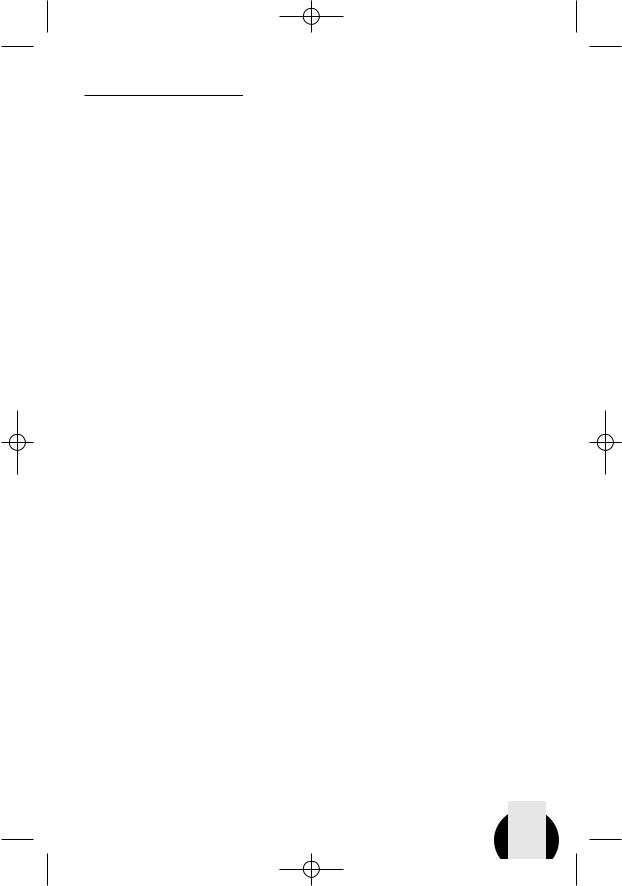
SHS-OOO4.qxd 21.11.2006 16:56 Page 101
ГЛАВА 5. Патогенетические механизмы антифосфолипидного синдрома
human β2 glycoprotein I to phospholipids based on its crystal structure. EMBO J 1999; 18: 5166— 5174.
17.Schwarzenbacher R, Zeth K, Diederichs K,
Gries A, Kostner GM, Laggner P, Prassl R. Crystal structure of human β2 glycoprotein I: implications for phospholipid binding and the antiphospholipid syndrome. EMBO J 1999; 18: 6228—6239.
18.Lutters BCH, de Droot P, Derksen RHWM. β2 glycoprotein 1 — a key player in the antiphos pholipid syndrome. JMAJ 2002; 4 (Suppl): 958— 962.
19.Hunt J, Krilis S. The fifth domain of beta2 glycoprotein I containes a phosphilipid binding site (cys281 cys288), and region recognised by anti cardiolipin antibodies. J Immunol 1994; 152: 653—659.
20.Kertesz Z, Yu B, Steinkasserer A, et al. Characterization of binding of human beta2 gly coprotein I to cardiolipin. Biochem J 1995; 310:315—321.
21.Wurm H. Beta2 glycoprotein I (apol ipoprotein H) interactions with phospholipid vesi cles. Int J Biochem 1984; 16: 511—515.
22.Kochl S, Fresser F, Lobentanz E, et al. Novel interaction of apolipoprotein (a) with β2 glycoprotein I mediated by the kringle IV domain. Blood 1997; 90: 1482—1489.
23.Rojkjaer R, Klaerke DA, Schousboe I. Characterisation of the interaction between β2 glycoprotein I and calmodulin, and identification of the binding sequence in β2 glycoprotein I. Biochem Biophys, Acta Protein Struct Mol Enzymol 1997; 1339: 217—225.
24.Ma K, Zhang J C. Wan K, et al. The bind ing of β2 glycoprotein I (β2 GPI) to endothelial cells mediated through a high affinity interaction with annexin II. Blood 1998; 92L; 172A.
25.Chonn A, Semple SC, Cullis PR. β2 glyco protein I is a major protein associated with very rapidly cleared liposomes in vitro, suggesting a sig nificant role in the immune clerance of "non self" particles J Biol Chem 1995; 270: 25845 25849.
26.Balasubramanian K, Chandra J, Schroit
AJ. Immune clearance of phosphatidylserine expressing cells by phagocytes. The role of β2 gly coprotein I is macrophage recognition. J Biol Chem 1997; 272: 31113—31117.
27.Borchman D, Harris EN, Pierangelli SS, Lamba OP. Interactions and molecular structure of cardiolipin and beta2 glycoprotein 1 (beta2 GP1). Clin Exp. Immunol 1995; 102:37.
28.Chonn A, Semple SC, Cullis PR. β2 Glycoprotein I is a major protein associated with very rapidly cleared liposomes in vivo, suggesting a significant role in the immune clearance of "non self" particles. J Biol Chem 1995; 270: 25845—25849.
29.Manfredi AA, Rovere P, Galati G, Heltai S, Bozzolo E, Soldini L, Davoust J, Balestrieri G, Tincani A, Sabbadini MG. Apoptotic cell clear ance in systemic lupus erythematosus, I: opsoniza tion by antiphospholipid antibodies. Arthritis Rheum 1998; 41: 205—214.
30.Merten M, Motamedy S, Ramamuthy S, et al. Sulfatides. Targets for antiphospholipid anti bodies. Circulation 2003; 108: 2082—2087.
31.Cleve H. Genetic studies on the deficiency of b2glycoprotein I of human serum. Humangenetik 1968; 5: 294—304.
32.Yasuda S, Tsutsumi A, Chiba H, Yanai H,
Miyoshi Y, Takeuchi R, Horita T, Atsumi T, Ichikawa K, Matsuura E, Koike T. β2 Glycopro tein I deficiency: prevalence, genetic background and effects on plasma lipoprotein metabolism and hemostasis. Atherosclerosis 2000; 152: 337—346.
33.Bancsi LF, van der Linden IK, Bertina RM. β2 Glycoprotein I deficiency and the risk of thrombosis. Thromb Haemost 1992; 67: 649— 653.
34.Sheng Y, Reddel SW, Herzog H, Wang YX,
Brighton T, France MP, Robertson SA, Krilis SA. Impaired thrombin generation in β2 glycoprotein I null mice. J Biol Chem 2001; 276: 13817— 13821.
35.Gharavi AE, Sammaritano LR, Wen J,
Elkon KB. Induction of antiphospholipid antibod ies by immunization with β2 glycoprotein I (apolipoprotein H). J Clin Invest 1992; 90: 1105—1109.
36.Gharavi AE, Sammaritano LR, Bovastro
JL, Wilson WA. Specificities and characteristics of β2 glycoprotein I induced antiphpspholipid antibodies. J Lab Clin Med 1995; 125: 775— 778.
37.Reddel SW, Wang YX, Sheng YH, Krilis SA. Epitope studies with anti β2 glycoprotein I anti
101
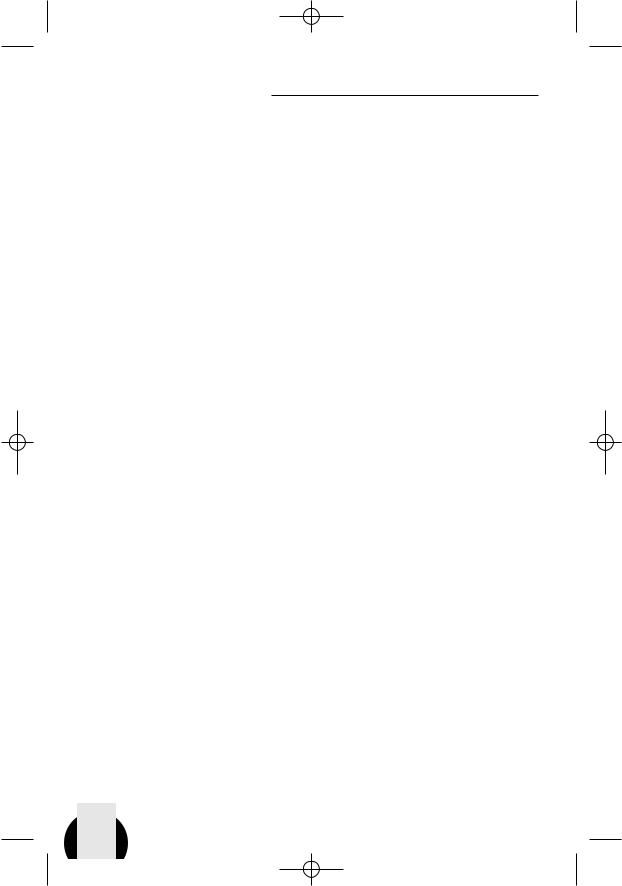
SHS-OOO4.qxd 21.11.2006 16:56 Page 102
Насонов Е.Л. Антифосфолипидный синдром
bodies from autoantibody and immunized sources. J Autoimmun 2000; 15: 91—96.
38.McNeeley PA, Dlott JS, Furie RA, Jack
RM, Ortel TL, Triplett DA, Victoria EJ, Linnik MD. β2 Glycoprotein I dependent anticardi olipin antibodies preferentially bind the amino terminal domain of β2 glycoprotein I. Thromb Haemost 2001; 86: 590—595.
39.Палькеева МЕ, Сидорова МВ, Кузнецо ва ТВ, Кобылянский АГ, Тищенко ВА, Насо нов ЕЛ, Беспалова ЖД, Евстигнеева РП. Синтез и исследование антигенных свойств пептидных фрагментов бета2 гликопротеи на I. Биоорганическая химия, 1996; 9: 678— 685.
40.Roubey RAS, Eisenberg RA, Harper MF,
Winfield JB. "Anticardiolipin" antibodies recog nize β2 glycoprotein I in the absence of phospho lipid. Importance of antigen density and bivalent binding. J Immunol 1995; 154: 954—960.
41.Tincani A, Spatola L, Pratt E, et al. The anti β2 glycoprotein I activity in human anti phospholipid syndrome sera is due to monoreac
tive low affinity autoantibodies directed to epitope located on native β2 glycoprotein I and preserved during species evolution. J Immunol 1996; 157: 5732—5738.
42.Amengual O, Atsumi T, Koike T. Specifici ties, properties, and clinical significance of anti prothrombin antibodies. Arthritis Rheum 2003;
48:886—895.
43.de Groot PG, Derksen RHWM. The influ ence of antiphospholipid antibodies on the protein C pathway. In Hughes Syndrome, Antiphospho lipid Syndrome. Edited by Khamashta MA. London: Springer—Verlag; 2000; 307—316.
44.Dahlback B. Physiological anticoagulation: resistance to activated protein C and venous thromboembolism. J Clin Invest 1994; 94: 923— 927.
45.Koike T, Hughes GRV. Binding of anticar diolipin antibodies to protein C via beta 2 glyco protein I: a possible mechanism in inhibitory effect of antiphospholipid antibodies on the pro tein C system. Clin Exp Immunol 1998, 112: 325—333.
46.Galli M, Ruggeri L, Barbui T. Differential effects of anti beta 2 glycoprotein I and anti pro thrombin antibody on the anticoagulant activity of
activated protein C. Blood 1998, 91: 1999— 2004.
47.Male C, Mitchell L, Julian J, et al. Acquired activated protein C resistance is asso ciated with lupus anticoagulants and thrombotic events in pediatric patients with systemic lupus erythematosus. Blood 2001; 97: 844— 849.
48.Ieko M, Sawada KI, Koike T, et al. The putative mechanism of thrombosis in antiphos pholipid syndrome: impairment of the protein C and the fibrinolytic systems by monoclonal anti cardiolipin antibodies. Semin Thromb Hemost 1999; 25: 503— 507.
49.Esmon CT. The anticoagulant and anti inflammatory roles of the protein C anticoagulant pathway. J Autoimmun 2000; 15: 113—116.
50.Ames PR, Tommasino C, Iannaccone L, Brillante M, Cimino R, Brancaccio V. Coagu lation activation and fibrinolytic imbalance in subjects with idiopathic antiphospholipid antibod ies a crucial role for acquired free protein S defi ciency. Thromb Haemost 1996; 76: 190—194.
51.Crowther MA, Johnston M, Weitz J, Ginsberg JS. Free protein S deficiency may be found in patients with antiphospholipid antibodies who do not have systemic lupus erythematosus. Thromb Haemost 1996; 76: 689—691.
52.Shibata S, Harpel PC, Gharavi A, Rand J, Fillit H. Autoantibodies to heparin from patients with antiphospholipid antibody syndrome inhibit formation of antithrombin III thrombin complex es. Blood 1994; 83: 2532—2540.
53.Schousboe I, Rasmussen MS. Synchro nized inhibition of the phospholipid mediated autoactivation of factor XII in plasma by beta2 glycoprotein I and anti beta2 glycopro tein I. Thromb Haemost 1995; 73: 798—804.
54.Jones DW, Gallimor MJ, MacKie IJ, et al. Reduced factor XII levels in patients with the antiphospholipid syndrome are associated with antibodies to factor XII. Br J Haematol 2000;
110:721— 726.
55.Sugi T, Makino T: Plasma contact system, kallikrein/kinin system and antiphospholipid protein antibodies in thrombosis and pregnancy. J Reprod Immunol 2000; 47: 169— 184.
56.Dueymes M, Levy Y, Ziporen L, Jamin C, Piette JC, Shoenfeld Y, Youinou P. Do some antiphospholipid antibodies target endothelial
102
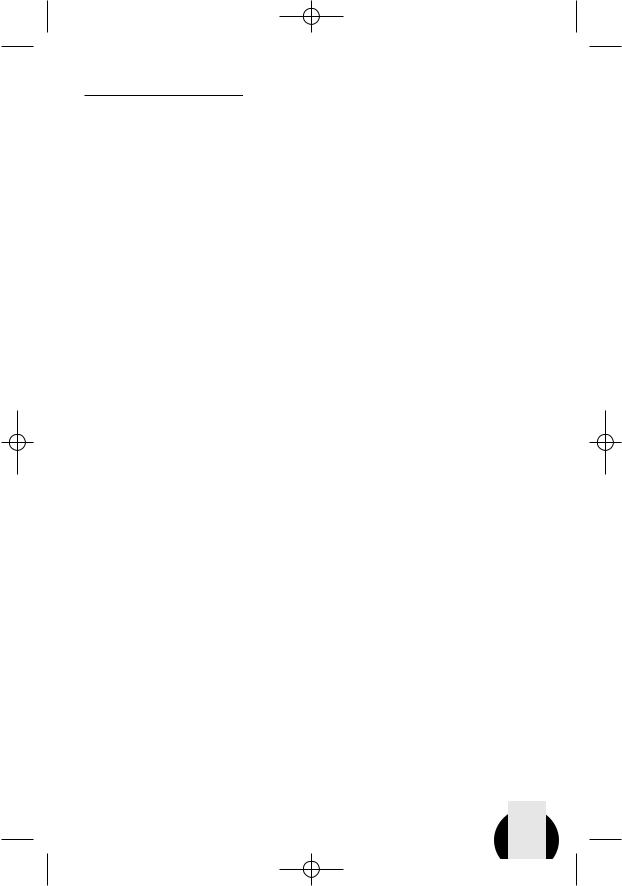
SHS-OOO4.qxd 21.11.2006 16:56 Page 103
ГЛАВА 5. Патогенетические механизмы антифосфолипидного синдрома
cells? Ann Med Interne (Paris). 1996; 147 (Suppl 1): 22—23.
57.Matsuda J, Gotoh M, Gohchi K, Kawasugi K, Tsukamoto M, Saitoh N. Anti endothelial cell antibodies to the endothelial hybridoma cell line (EAhy926) in systemic lupus erythematosus patients with antiphospholipid antibodies. Br J Haematol 1997; 97: 227—232.
58.Navarro M, Cervera R, Teixido M, Reverter JC, Font J, Lopez Soto A, Monteagudo J, Escolar
G, Ingelmo M. Antibodies to endothelial cells and to β2 glycoprotein I in the antiphospholipid syn drome: prevalence and isotype distribution. Br J Rheumatol 1996; 35: 523—528.
59.Le Tonqueze M, Salozhin K, Dueyems M, Nasonov E, Piette J C, Youinou P. Role of β2 gly coprote in the antiphospholipid antibody binding to endothelial cells. Lupus, 1995; 7: 179—186.
60.Meroni PL, Raschi E, Camera M, Testoni C, Nicoletti F, Tincani A, Khamashta MA, Balestrieri G, Tremoli E, Hess DC. Endothelial activation by aPL: a potential pathogenetic mech anism for the clinical manifestations of the syn drome. J Autoimmun. 2000; 15: 237—240.
61.Keying M, Simantov R, Jing Chuan Z, et al. High affinity binding of β2 glycoprotein I to human endothelial cells is mediated by Annexin II. J Biol Chem 2000; 20: 15541— 15548.
62.Afek A, Shoenfeld Y, Manor R, et al. Increased endothelial cell expression of alpha3beta1 integrin in cardiac valvulopathy in primary (Hughes) and secondary antiphospho lipid syndrome. Lupus 1999; 8: 502— 507.
63.Pierangeli SS, Colden Stanfield M, Liu X, et al. Antiphospholipid antibodies from antiphos pholipid syndrome patients activate endothelial cells in vitro and in vivo. Circulation 1999; 99: 1997— 2002.
64.Pierangeli SS, Espinola RG, Liu X, et al. Thrombogenic effects of antiphospholipid anti bodies are mediated by intercellular cell adhesion molecule 1, vascular cell adhesion molecule 1, and P selectin. Circ Res 2001; 88: 245— 250.
65.Del Papa N, Sheng YH, Raschi E, et al. Human 2 glycoprotein I binds to endothelial cells through a cluster of lysine residues that are critical for anionic phospholipid binding and offers epitopes for anti 2glycoprotein I antibod ies. J Immunol 1998; 160: 5572— 5578.
66.Meroni PL, Raschi E, Testoni C, et al.
Statins prevent endothelial cell activation induced by anti phospholipid (anti β2 glycoprotein I) antibodies: effect on the pro adhesive and proin flammatory phenotype. Arthritis Rheum 2001; 44: 2870—2878.
67.Raschi E, Testoni C, Bosisio D, et al. Role of the MyD88 transduction signaling pathway in endothelial activation by antiphospholipid anti bodies. Blood 2003; 101: 3495—3500.
68.Александрова ЕН, Новиков АА., Решет няк ТМ, Клюквина НГ, Решетняк ДВ, Самсо нов МЮ, Насонов ЕЛ. Растворимые молеку лы адгезии при антифосфолипидном синдро ме, связанном с системной красной волчан кой, и первичном антифосфолипидном синд роме. Терапевт. архив, 2002; 5; 23—27.
69.Kaplanski G, Cacoub P, Farnarier C, et al. Increased soluble vascular cell adhesion molecule 1 concentrations in patients with primary or sys temic lupus erythematosus related antiphospho lipid syndrome: correlations with the severity of thrombosis. Arthritis Rheum 2000; 43: 55— 64.
70.Penn MS, Topol EJ. Tissue factor, the emerging link between inflammation, thrombo sis, and vascular remodeling. Circ Res 2001; 89:1—2.
71.Dobado Berrios F M, Lopez Pedrera C, Velasco F, Cuadrado M J. The role of tissue fac tor in the antiphospholipid syndrome. Arthritis Rheum 2001; 44: 2467—2476.
72.Amengual O, Atsumi T, Khamashta MA. Tissue factor in the antiphospholipid syndrome: shifting the focus from coagulation to endotheli um. Rheumatology 2003; 43: 1—3.
73.Branch DW, Rodgers GM. Induction of endothelial cell tissue factor activity by sera from patients with antiphospholipid syndrome: a possi ble mechanism of thrombosis. Am J Obstet Gynecol 1993; 168: 206—210.
74.Kornberg A, Renaudineau Y, Blank M, Youinou P, Shoenfeld Y. Anti β2 glycoprotein I antibodies and anti endothelial cell antibodies induce tissue factor in endothelial cells. Isr Med Assoc J 2000; 2 (Suppl 1): 27—31.
75.Cuadrado MJ, Buendia P, Lopez Pedrera C, et al. Increased tissue factor expression in monocytes from patients with antiphospholipid syndrome depens on NFkB activation.
103
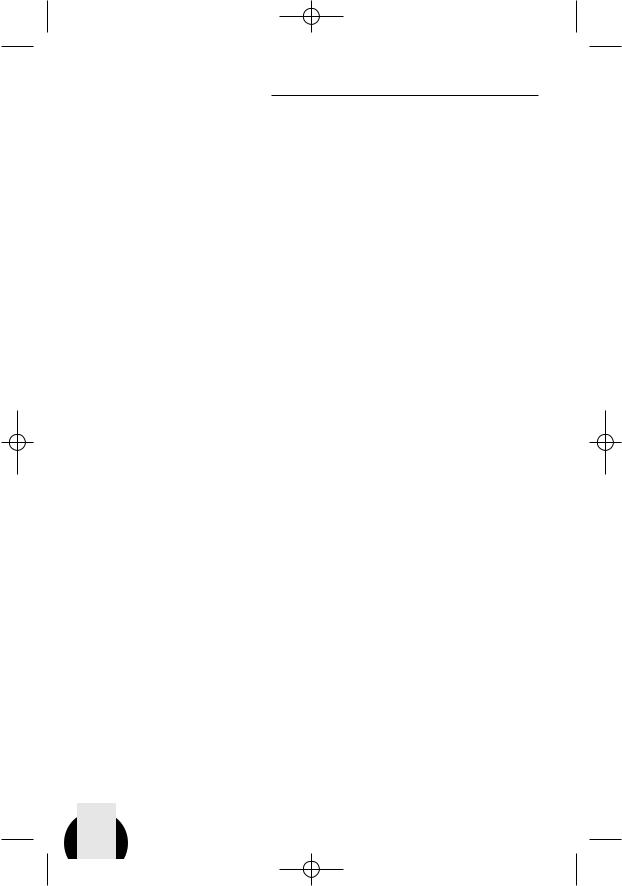
SHS-OOO4.qxd 21.11.2006 16:56 Page 104
Насонов Е.Л. Антифосфолипидный синдром
ACR/ARHP Annual Acientific Meeting 2003;
October 24—28, 322 (abst).
76.Martini F, Farsi A, Gori AM, Boddi M, Fedi S, Domeneghetti MP, Passaleva A, Prisco D, Abbate R. Antiphospholipid antibodies (aPL) increase the potential monocyte procoagulant activity in patients with systemic lupus erythe matosus. Lupus 1996; 5: 206—211.
77.Visvanathan S, Geczy CL, Harmer JA,
McNeil HP. Monocyte tissue factor induction by activation of β2 glycoprotein I specific T lym phocytes is associated with thrombosis and fetal loss in patients with antiphospholipid antibodies. J Immunol. 2000; 165: 2258—2262.
78.Reverter JC, Tassies D, Font J, Monteagudo J, Escolar G, Ingelmo M, Ordinas A. Hypercoa gulable state in patients with antiphospholipid syndrome is related to high induced tissue factor expression on monocytes and to low free protein s. Arterioscler Thromb Vasc Biol 1996; 16: 1319— 1326.
79.Dunoyer Geindre S, De Moerloose P, Galve De Rochemonteix B, et al. NF kB is an essential intermediate in the activation of endothelial cells by anti beta2 glycoprotein I antibodies. Thromb Haemost 2002; 88: 851—857.
80.Salemink I, Blezer R, Willems GM, Galli M, Bevers E, Lindhout T. Antibodies to β2 glyco protein I associated with antiphospholipid syn drome suppress the inhibitory activity of tissue factor pathway inhibitor. Thromb Haemost 2000;
84:653—656.
81.Adams MJ, Donohoe S, Mackie IJ, Machin SJ. Anti tissue factor pathway inhibitor activity in patients with primary antiphospho lipid syndrome. Br J Haematol 2001; 114: 375— 379.
82.Andree HAM, Hermens WT, Hemker HC, Willems GM. Displacement of factor Va by annexin V. In: Andree HAM, ed. Phospholipid Binding and Anticoagulant Action of Annexin V. Maastricht, The Netherlands: Universitaire Pers Maastricht 1992: 73—85.
83.Rand JH, Wu XX, Guller S, Gil J, Guha A, Scher J, Lockwood CJ. Reduction of annexin V (placental anticoagulant protein I) on placental villi of women with antiphospholipid antibodies and recurrent spontaneous abortion. Am J Obstet Gynecol 1994; 171: 1566—1572.
84.Rand JH, Wu XX, Guller S, Scher J, Andree HAM, Lockwood CJ. Antiphospholipid immuno globulin G antibodies reduce annexin V levels on syncytiotrophoblast apical membranes and in cul ture media of placental villi. Am J Obstet Gynecol 1997; 177: 918—923.
85.Vogt E, Ng AK, Rote NS. Antiphos phatidylserine antibody removes annexin V and facilitates the binding of prothrombin at the sur face of a choriocarcinoma model of trophoblast differentiation. Am J Obstet Gynecol 1997; 177: 964—972.
86.Rand JH, Wu XX, Andree HAM, Alexander Ross JB, Rosinova E, Gascon Lema MG, Calandri C, Harpel PC. Antiphospholipid anti bodies accelerate plasma coagulation by inhibit ing annexin V binding to phospholipids: a "lupus procoagulant" phenomenon. Blood. 1998; 92: 1652—1660.
87.Carreras L, Forastiero R, Martinuzzo M: Interaction between antiphospholipid antibodies and eicosanoids. In Hughes Syndrome, Antiphos pholipid Syndrome. Edited by Khamashta MA. London: Springer—Verlag; 2000: 337—347.
88.Lellouche F, Martinuzzo M, Said P, Maclouf J, Carreras LO. Imbalance of thromboxane/ prostacyclin biosynthesis in patients with lupus anti coagulant. Blood 1991; 78: 2894—2899.
89.Алекберова ЗС, Решетняк ТМ, Насонов ЕЛ и др. Уровни тромбоксана и простацикли на у больных системной красной волчанкой с антифосфолипидным синдромом. Клин. меди цина, 1994; 6: 31—35.
90.Atsumi T, Khamashta MA, Haworth RS, Brooks G, Amengual O, Ichikawa K, Koike T, Hughes GR. Arterial disease and thrombosis in the antiphospholipid syndrome: a pathogenic role for endothelin 1. Arthritis Rheum 1998; 41: 800— 807.
91.Cho C S, Cho M L, Chen PP, et al. Antiphospholipid antibodies induce monocyte chemoattractant protein 1 in endothelial cells. J Immunol 2002; 168: 4209—4215.
92.Clancy RM, Amin AR, Abramson SB. The role of nitric oxide in inflammation and immuni ty. Arthritis Rheum 1998; 41: 1141—1151.
93.Кобылянский АГ, Кузнецова ТВ, Соболе ва ГН и др. Определение оксида азота в сыво ротке и плазме крови человека. Метод высо
104
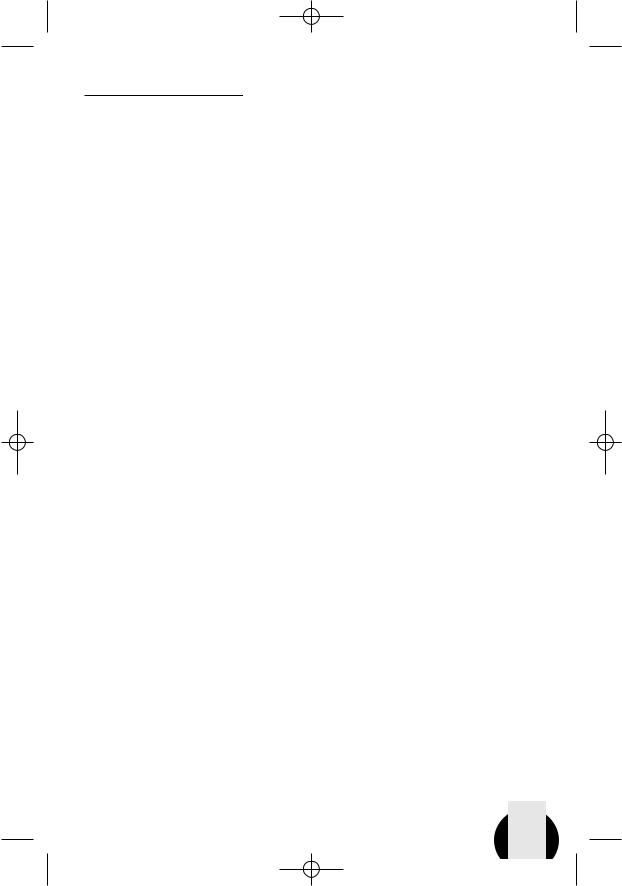
SHS-OOO4.qxd 21.11.2006 16:56 Page 105
ГЛАВА 5. Патогенетические механизмы антифосфолипидного синдрома
коэффективной жидкостной хроматограф фии. Биомедицинская химия, 2003; 6 с.
94.Shin Y J, Min S Y, Cho M L, et al. Enhanced nitric oxide production in endothelial cells by antiphospholipid antibodies. ACR/ARHP Annual Acientific Meeting, 2003, October 24— 28; 320 (abst).
95.Emmi L, Bergamini C, Spinelli A, Liotta F, Marchione T, Caldini A, Fanelli A, De Cristo faro MT, Dal Pozzo G. Possible pathogenetic role of activated platelets in the primary antiphospho lipid syndrome involving the central nervous sys tem. Ann N Y Acad Sci 1997; 823: 188—200.
96.Campbell AL, Pierangeli SS, Wellhausen S, Harris EN. Comparison of the effects of anticar diolipin antibodies from patients with the antiphospholipid syndrome and with syphilis on platelet activation and aggregation. Thromb Haemost 1995; 73: 529—534.
97.Nojima J, Suehisa E, Kuratsune H, Machii T, Koike T, Kitani T, Kanakura Y, Amino N. Platelet activation induced by combined effects of anticardiolipin and lupus anticoagulant IgG anti bodies in patients with systemic lupus erythemato sus possible association with thrombotic and thrombocytopenic complications. Thromb Hae most 1999; 81: 436—441.
98.Wiener MH, Burke M, Fried M, Yust I. Thromboagglutination by anticardiolipin anti body complex in the antiphospholipid syndrome. a possible mechanism of immune mediated throm bosis. Thromb Res 2001; 103: 193—199.
99.Ferro D, Basili S, Roccaforte S, et al. Deter minants of enhanced thromboxane biosynthesis in patients with systemic lupus erythematosus, Arthritis Rheum 1999; 42: 2689—2697.
100.Reverter JC, Tassies D. Mechanisms of thrombosis in the antiphospholipid syndrome: binding to platelets. In Hughes Syndrome, Antiphospholipid Syndrome. Edited by Khamash ta MA. London: Springer—Verlag; 2000: 290— 298.
101.Joseph JE, Harrison P, Mackie IJ, et al. Platelet activation markers and the primary antiphospholipid syndrome (PAPS). Lupus 1998; 7 (Suppl 2): S48— S51.
102.Reverter JC, Tassies D, Font J, et al.: Ef fects of human monoclonal anticardiolipin anti bodies on platelet function and on tissue factor
expression on monocytes. Arthritis Rheum 1998;
41:1420—1427.
103.Lackner KJ, von Landenberg C, Barlage S, et al. Analysis of prothrombotic effects of two human monoclonal IgG antiphospholipid anti bodies of apparently similar specificity. Thromb Haemost 2000; 83: 583— 588.
104.Robbins DL, Leung S, Miller Blair DJ, et al. Effect of anticardiolipin/beta2 glycoprotein I complexes on production of thromboxane A2 by platelets from patients with the antiphospholipid syndrome. J Rheumatol 1998; 25: 51—56.
105.George J, Gilburd B, Langevitz P, et al. Beta 2 glycoprotein I containing immune com plexes in lupus patients: association with throm bocytopenia and lipoprotein (a) levels. Lupus 1999; 8: 116—120.
106.Vega Ostertag M, Harris EN, Pierangeli SS, et al. Phosphorilation of P38MAPK is invol ved in antiphospholipid antibody mediated platelet activation. ACR/ARHP Annual Acientific Meeting, October, 2003; 24—28; 318 (abst).
107.Rock G, Chauhan K, Jamieson GA, et al. Anti CD36 antibodies in patients with lupus anti coagulant and thrombotic complications. Br J Haematol 1994; 88: 878—880.
108.Pelegri Y, Cerrato G, Martinuzzo LO, et al. Link between anti CD36 antibodies and thrombosis in the antiphosphilipid syndrome. Clin Exp Rheumatol 2003; 21: 221—224.
109.Daviet L, McGregor JL. Vascular biology of CD36: roles of this new adhesion molecule fanily in different disease states. Thromb Haemost 1997; 78: 65—69.
110.Stone S, Khamashta MA, Poston L. Pla centation, antiphospholipid syndrome and preg nancy outcome. Lupus 2001; 10: 67—74.
111.Sthoeger ZM, Mozes E, Tartakovsky B. Anti cardiolipin antibodies induce pregnancy failure by impairing embryonic implantation. Proc Natl Acad Sci USA 1993; 90: 6464—6467.
112.Rand JH, Wu X X, Andree HAM, et al. Pregnancy loss in the antiphospholipid antibody syndrome a possible thrombogenic mechanism. New Engl J Med 1997; 337:154—160.
113.McCrae KR, DeMichele AM, Pandhi P, et al. Detection of antitrophoblast antibodies in the sera of patients with anticardiolipin antibodies and fetal loss. Blood 1993; 82: 2730—2741.
105
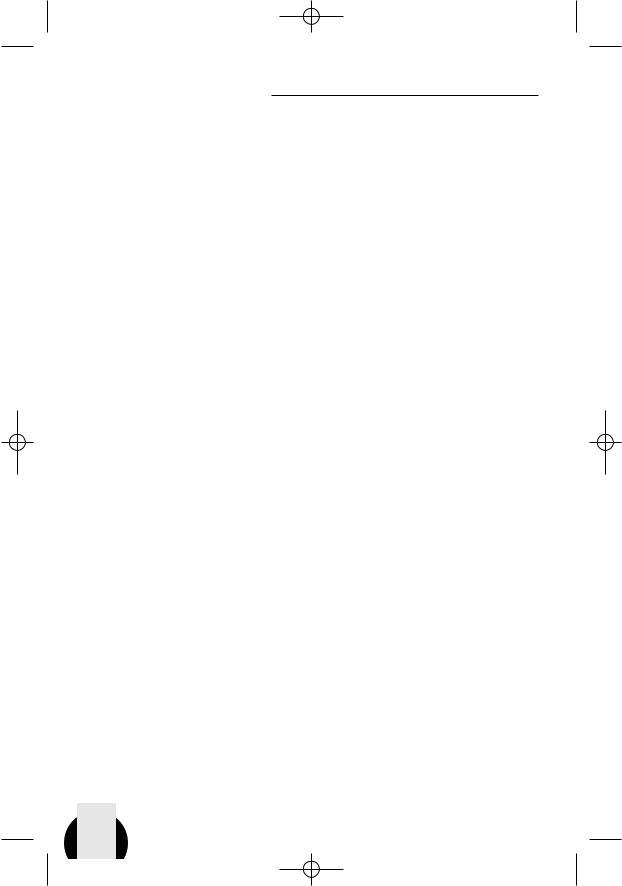
SHS-OOO4.qxd 21.11.2006 16:56 Page 106
Насонов Е.Л. Антифосфолипидный синдром
114.Peacemn AM, Rehnberg KA. The effect of immunoglobulin G fraction from patients with lupus anticoagulant on placental prostacyclin and thromboxane production. Am J Obstet Gynecol 1995; 199: 1403—1406.
115.Donohoe S, Kingdom JCP, Mackie IJ: Affinity purified human antiphospholipid anti bodies bind normal term placenta. Lupus 1999; 8: 525—531.
116.Rote NS, Vogt E, DeVere G, et al. The role of placental trophoblast in the pathophysiology of the antiphospholipid antibody syndrome. Am J Reprod Immunol 1998, 39: 125—136.
117.Chamley LW, Duncalf AM, Mitchell MD, et al. Action of anticardiolipin and antibodies to beta 2 glycoprotein I on trophoblast proliferation as a mechanism for fetal death. Lancet 1998;
352:1037—1038.
118.Di Simone N, Meroni PL, Del Papa N, et al. Antiphospholipid antibodies affect trophoblast gonadotrophin secretion and invasiveness by binding directly and through adhered beta 2 gly coprotein I. Arthritis Rheum 2000; 43: 140—153.
119.Shurtz SR, et al. In vitro effects of anticar diolipin autoantibodies upon total and pulsatile placental hCG secretion during early pregnancy. Am J Reptoduct Immunol 1993; 29: 206—210.
120.Salmon JE, Girardi G, Holers VM. Complement activation as a mediator of antiphos pholipid antibody induced pregnancy loss and thrombosis. Ann Rheum Dis 2002; 61: (Suppl II): ii46—ii50.
121.Atkinson JP. Complement system on the attack in autoimmunity. J Clin Invest 2003; 112: 1639—1641.
122.Girardi G, Berman J, Redecha P, et al. Complement C5a receptors and neutrophil medi ated fetal injury in the antiphospholipid syn drome. J Clin Invest 2003; 112: 1644—1654.
123.Berman J, Girardi G, Salmon JE, et al. Tumor necrosis factor α is an important effector in antiphospholipid induced pregnancy loss in mice. ACR/ARHP Annual Acientific Meeting, October, 2003, 24—28; 1115 (abst).
124.Sun KH, Liu WT, Tsai CY, Liao TS, Lin WM, Yu CL. Inhibition of astrocyte proliferation and binding to brain tissue of anticardiolipin anti bodies purified from lupus serum. Ann Rheum Dis 1992; 51: 707—12.
125.Khalili A, Cooper RC. A study of immune responses to myelin and cardiolipin in patients with systemic lupus erythematosus (SLE). Clin Exp Immunol 1991; 85: 365—72.
126.Liou HH, Wang CR, Chou HC et al. Anticardiolipin antisera from lupus patients with seizures reduce a GABA receptor—mediated chlo ride current in snail neurons. Life Sci 1994; 54: 1119—25.
127.Kent M, Alvarez F, Vogt E, Fyffe R, Ng AK, Rote N. Monoclonal antiphosphatidylserine antibodies react directly with feline and murine central nervous system. J Rheumatol 1997; 24: 1725—33.
128.Kent MN, Alvarez FJ, Ng AK, Rote NS. Ultrastructural localization of monoclonal antiphospholipid antibody binding to rat brain. Exp Neurol 2000; 163: 173—9.
129.D`Cruz D, Hughes G. Antiendothelial cell antibodies, antiphospholipid antibodies and vas cular disease. Vasculitis Science and practice. B Ansell, P Bacon, J Lie, H Yazici (eds). Chapmam
&Hall Medical 1996; 65—82.
130.Насонов ЕЛ, Баранов АА, Шилкина НП. Васкулиты и васкулопатии. Яро славль: Издательство "Верхняя Волга", 1999; 613 с.
131.Praprotnic S, Blank M, Meroni PL, et al. Classification of anti endothelial cell antibodies into antibodies against microvascular and macrovascular endothelial cells. Arthritis Rheum 2001; 44: 1483—1494.
132.D`Cruz D, Houssiau FA., Ramirez G, et al. Antibodies to endothelial cells in systemic lupus erythematosus: a potential marker for nephritis and vasculitis. Clin Exp Immunol 1991; 85: 254—261.
133.Navarro M, Cervera R, Font J, et al. Anti endothelial antibodies in systemic autoimmune diseases: prevalence and clinical significance. Lupus 1997; 6: 521—526.
134.Nylander Lundqvist E, Back O, Nillsson TK, Rantapaa Dahlqvist S. Prevalence of anti endothelial antibodies in patients with autoimmune disease. Clin Rheumatol 1992; 11: 248—263.
135.Van der Zee JM, Siegert CE, de Vreede TA, et al. Characterisation of anti endothelial cell antibodies in systemic lupus erythematosus (SLE). Clin Exp Immunol 1991; 84:238—244.
106
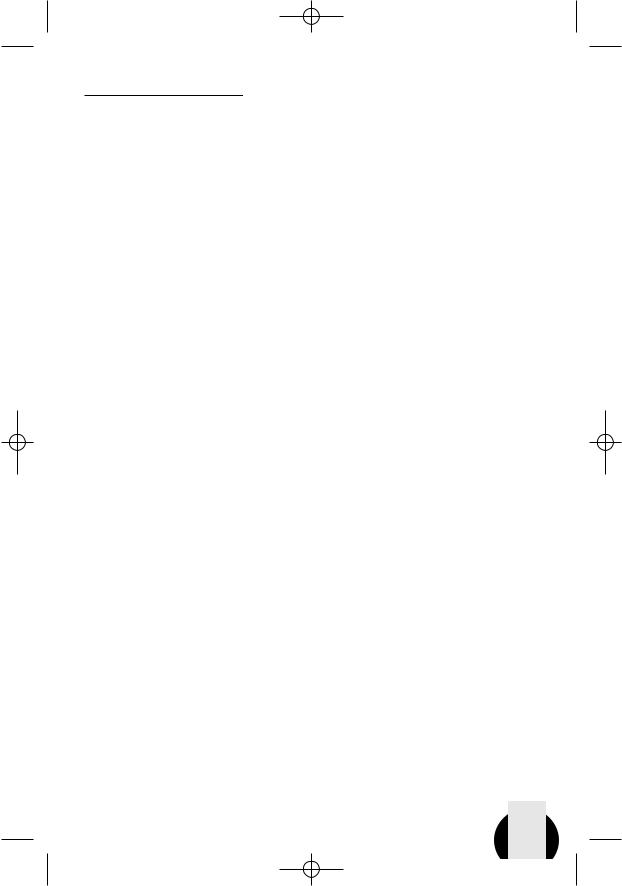
SHS-OOO4.qxd 21.11.2006 16:56 Page 107
ГЛАВА 5. Патогенетические механизмы антифосфолипидного синдрома
136.Perry GJ, Elston T, Khouri NA, et al. Anti endothelial cell antibodies in lupus: correlation with renal injury anf circulating marker of endothelial damage. Q J Med 1993; 86: 727—734.
137.Chan TM, Yu PM, Tsang LC, Cheng IKP. Endothelial cell binding by human polyclonal anti DNA antibodies: relationship to disease activity and endothelial function alteration. Clin Exp Immunol 1995; 100: 506—513.
138.Del Papa N, Guidali L, Spatola L, et al. Relationship between anti phospholipid and antiendothelial vell antibodies III: beta 2 glyco protein I mediates the antibody binding to endothelial membranes and induce the expression of adhesion molecules. Clin Exp Rheumatol 1995;
13:179—185.
139.Garvalho D, Savage COS, Isenberg D, Pearson JD. IgG anti endothelial cell autoanti bodies from patients with systemic lupus erythe matosus or systemic vasculitis stimulate the release of two endothelial cell derived mediators, which enhance adhesion molecule expression and leukocyte adhesion in an autocrine manner. Arthritis Rheum 1999; 42: 631—640.
140.McGrae KR, de Michele A, Samuels P, et al. Detection of endothelial cell reactive immunoglobulin in patients with anti phospholipid antibodies. Br J Heamatol 1991; 79: 595—605.
141.Del Papa N, Raschini E, Moroni G, et al. Anti endothelial cell IgG fraction from sysyemic lupus erythematosus patients bind to human endothelial cell and induce a pro adhesive and pro inflammatory phenotype in vitro. Lupus 1999; 8: 423—429.
142.Hill MB, Philips JL, Hughes P, Greaves M. Anti endothelial cell antibodies in primary antiphospholipid syndrome and SLE: pattern of reactivity with membrane antigens on microvas cular and umbilical venous cell membranes. Br J Haematol. 1998; 103: 416—421.
143.Насонов ЕЛ, Алекберова ЗС, Саложин КВ, Клюквина НГ, Александрова ЕН, Баранов АА, Ле Тонкез М, Юну П. Антиэндотелиаль ные антитела при системной красной вол чанке у мужчин: связь с поражением почек и антифосфолипидным синдромом. Терапевт. архив, 1996; 6: 46—49.
144.Калашникова ЛА, Саложин КВ, Насо нов ЕЛ, Кошелева НМ, Решетняк ТМ, Сто
янович ЛЗ. Антитела к эндотелию при синд роме Снеддона. Терапевт. архив, 1996; 1: 54—57.
145.Frances G, Le Tonqueze M, Salozhin K, Kalasdhnikova L, Piette J C, Nasonov EL, Godeau P, Youinou P. Prevalence of anti endothelial cell antibodies in patients with Sneddon`s syndrome. J Amer Acad Dermatol 1995; 33: 64—68.
146.Насонов ЕЛ, Саложин КВ, Фомичева ОА, Клюквина НГ, Карпов ЮА, Вильчинская МЮ, Александрова ЕН, Алекберова ЗС, Ба ранов АА, Сергакова ЛМ. Антиэндотелиаль ные антитела и поражение клапанов сердца при антифосфолипидном синдроме: анализ патогенетических механизмов. Клин. меди цина, 1997; 2: 17—21.
147.Cervera R, Khamashta MA, Font J, et al. Antiendothelial cell antibodies in patients with the antiphospholipid syndrome. Autoimmunity 1991;
11:1—6.
148.Walker TS, Triplett DA, Javed N, et al. Evaluation of lupus anticoagulants: antiphospho lipid antibodies, endothelium associated im munoglobulin in patients with anti phospholipid antibodies Thromb Res 1988; 51: 595—605.
149.Garcia Torress R, Amogo M C, de la Rossa A, Reyes PA. Valvular heart disease in primary antiphospholipid syndrome (PAPS): clinical and morphological findings. Lupus 1996; 5: 56—61.
150.Guilly MN, Danon F, Brouet JC, et al. Autoantibodies to nuclear lamin B in patients with thrombocytopenia. Eur J Cell Biol 1987; 43: 266—272.
151.Lassoued K, Guilly MN, Danon F, et al. Antinuclear autoantibodies specific for lamins: characterization and clinical significance. Ann Intern Med 1988; 108: 829—833.
152.Senecal J L, Rauch J, Grodzicky T, et al. Strong association of autoantibodies to human nuclear lamin B1 with lupus anticoagulant anti bodies in systemic lupus erythematosus Arthritis Rheum 1999; 42: 1347—1353.
153.Клюквина НГ, Баранов ЕЛ, Александ рова ЕН, Насонов ЕЛ. С реактивный белок при системной красной волчанке у мужчин: связь с тромботическими осложнениями. Клин. медицина, 1997; 8: 24—26.
107

SHS-OOO4.qxd 21.11.2006 16:56 Page 108
Насонов Е.Л. Антифосфолипидный синдром
154.Papo T, Piette J C, Legao E, et al. T lym phocytes subsets in primary antiphospholipid syn drome. J Rheumatol 1994; 21: 2242—2245.
155.Arnett FC, Olsen ML, Anderson KL, Reveille JD. Molecular analysis of major histo compatibility complex alleles associated with the lupus anticoagulant. J Clin Invest 191; 87: 1490—1495.
156.Loizou S, Cofiner C., Weetman AP, Walport MJ. Immunoglobulin class and IgG sub class distribution of anticardiolipin antibodies in patients with systemic lupus erythematosus and associated disorders. Clin Exp Immunol 1992;
90:434—439.
157.Kita Y, Sumida T, Iwamoto I, et al. V gene analysis of anti cardiolipin antibodies from (NZWXBXSB) F1 mice. Immunology 1994; 82: 494—501.
158.Blank M, Krause I., Lanir N, et al. Transfer of experimental antiphоspholipid syn drome by bone marrow cell transplantation: the importance of the T cell. Arthritis Rheum 1995;
38:115—122.
159.Visvanathan S, McNeil HP. Cellular immunity to β2 glycoprotein I in patients with
antiphospholipid syndrome. J Immunol 1999;
162:6919—6925.
160.Hattori N, Kuwana M, Kabukai J, et al. T cell that are autoreactive to β2 glycoprotein I in patients with antiphospholipid syndrome and healthy individuals. Arthritis Rheum 2000; 43: 65—75.
161.Davies ML, Young SP, Welsh K, et al. Immune responses to native β2 glycoproteim I in patients with systemic lupus erythematosus and the antiphospholipid syndrome. Rheumatology 2002; 41: 395—400.
162.Del Prete G, De Carli M, Lammel RM, et al. Th1 and Th2 T helper cells exert opposite reg ulatory effects on procoagulant activity and tissue factor production by monocytes. Blood 1995; 250 (abst).
163.Wegmann TG, Lin H, Guilbert L, Mos mann TR. Bidirectional cytokine interactions in the maternal fetal relationship: is successful preg nancy a TH2 phenomenon? Immunol Today 1993; 13: 353.
164.Raghupathy R. Th1 type immunity is incompatible with successful pregnancy. Immunol Today 1997; 18: 478.
108
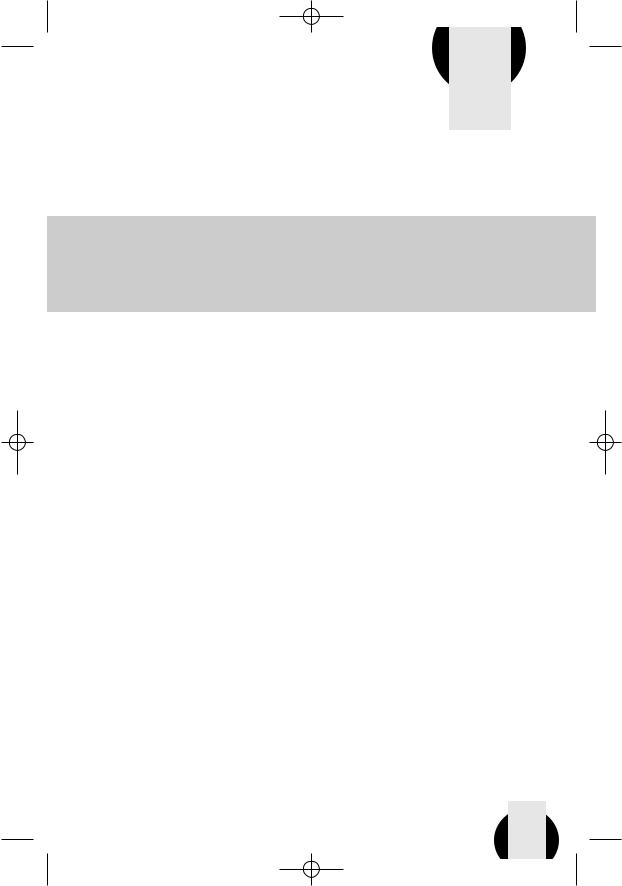
SHS-OOO4.qxd 21.11.2006 16:56 Page 109
глава 6
ИМ М У Н Н Ы Е М Е Х А Н И З М Ы
АТ Е Р О С К Л Е Р О З А
В последние годы благодаря успехам фундаментальной дицины созданы реальные предпосылки для расшифровки иммунопатологических процессов, запускающих и хроническое воспаление. Результаты этих исследований новить, что хроническое воспаление играет роль при шем числе заболеваний, чем это считалось ранее1. К таким ным заболеваниям относится и атеросклеротическое в основе патогенеза которого лежат два взаимосвязанных
липидемия и хроническое воспаление3 5, которое может вано и поддерживается разнообразными инфекционными По современным представлениям, локальное (в бляшке) и системное воспаление играет фундаментальную тии атеросклероза и его осложнений. Хотя истинные факторы (а точнее, триггерные механизмы) атерогенного го ответа до конца не ясны, обсуждается роль очень
диаторов, многие из которых являются хорошо известными
риска возникновения атеросклероза (таблица 6.1).
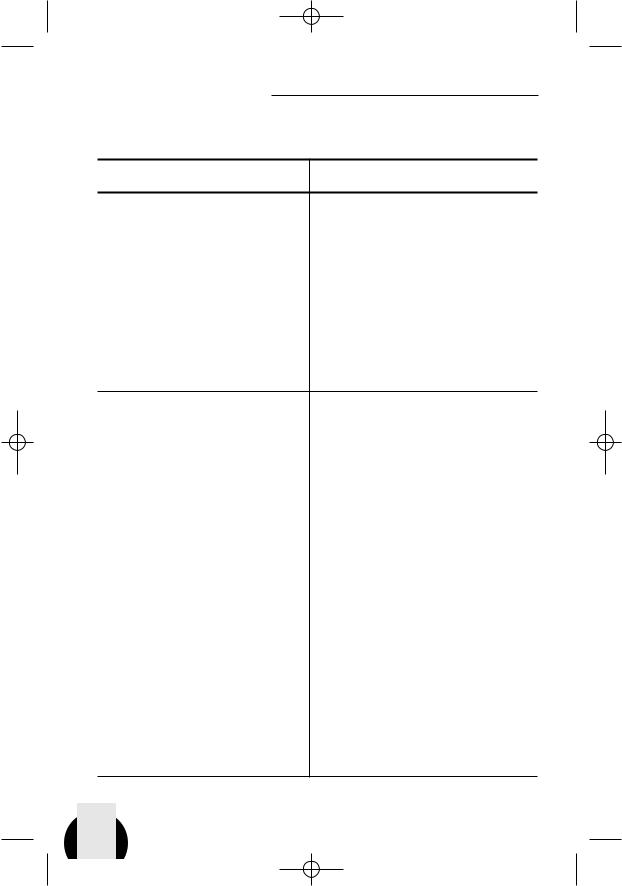
SHS-OOO4.qxd 21.11.2006 16:56 Page 110
Насонов Е.Л. Антифосфолипидный синдром
6.1. Медиаторы и факторы риска атеросклеротического поражения
Возможный патогенетический механизм
Chlamydia pneuminiae, Индукция синтеза медиаторов воспаления pylori, возбудители
пародонта (Porphyromonas Streptococcus sanguis,
viridans), Mycoplasma Haemophilus influenzae, респираторных
инфекций агенты: Cytomegalovirus,
простого герпеса HSV 2), вирус
вирусы гепатитов A гриппа, ВИЧ
|
Воспаление |
|
Пролиферация ГМК, блокада активации |
|
плазминогена |
плотные частицы ЛНП |
Чувствительны к окислению, обладают |
|
сильным сродством к протеогликану |
|
сосудистой стенки |
|
|
|
Дисфункция эндотелия |
|
Протромботический и провоспалительный |
|
эффекты |
|
|
|
Активация эндотелия, воспаление |
|
|
ФЛА2 |
Образование лизолицитина |
|
(молекула воспаления) и гидролиз |
|
окисленных ФЛ с образованием |
|
атерогенных фрагментов |
|
|
ИЛ 6, ИЛ 18, ФНО α |
Провоспалительные и атерогенные |
|
цитокины |
|
|
NO синтаза |
Дисфункция эндотелия |
|
|
|
Провоспалительный эффект; |
|
окислительный стресс |
|
|
свертывания крови |
|
|
Активация свертывания крови |
110
